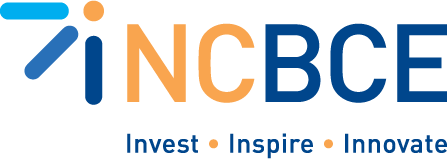Essential Questions
- What do you do when something goes wrong with a device?
- If you would normally call someone, what do you need to know and be able to do when people start calling you?
Big Ideas
Using a Troubleshooting Model can help you provide more effective and efficient support when asked to service a device, software, or networking issues. While you can develop specific knowledge and skills about different devices, software, and networks, a troubleshooting model can be used in multiple settings to help identify and potentially resolve issues.
Connection to Student Lives
Many things break down, especially technology. Or at least things happen that make them perform poorly. They may slow down or they may stop supporting your favorite app or software. Most people have to call, chat, or email someone for support with their personal devices. Consider when someone has been especially helpful to you in figuring out and repairing or making one of your devices work better. You can be that person for others.
Framing Problem
Technicians will provide a range of devices with common problems that students can apply and come to internalize the CompTIA troubleshooting model.
Cornerstone Assessment
Students will work in Teams to troubleshoot issues using the CompTIA troubleshooting model
DPI Standards
- 3.03 Understand troubleshooting hardware and software
CompTIA Standards
- 1.6 Explain the troubleshooting methodology
HDI Standards
- 5.15.1 Define troubleshooting
- 5.15.2 Define Structured problem-solving.
- 5.15.3 Explain creative thinking.
- 5.15.4 Explain critical thinking.
Knowledge
- And should be able to describe the steps of the CompTIA troubleshooting methodology (Note: Students should memorize the steps in their proper order.)
- Syntax for search engines
Skills
- Apply the steps of the CompTIA troubleshooting methodology: Identify the problem Research knowledge base or Internet Establish a theory of probably cause Test the theory to determine the cause Establish a plan of action to resolve the problem and identify potential effects Implement the solution or escalate as necessary Verify full system functionality and, if applicable, implement preventive measures Document findings/lessons learned, actions and outcomes
- Refine searches using basic search engine syntax or the advanced features
Vocabulary
- Power-On Self-Test (POST) -
Weekly Map
Monday
Introduction to problems:
Team meetings to develop project plan and goals
Tuesday
Review content resources with whole group
Small group and independent exploration of resources
Contribute to team project
Wednesday
Hands-on exploration with IT professionals
Team progress check with supervisor (using project plan)
Thursday
Hands-on exploration with IT professionals
Small group and independent exploration of resources
Contribute to team project
Friday
Team progress check with supervisor or sharing of progress with whole group
Knowledge check: Recall and describe the method steps in order
Monitor progress and adjust project plan as necessary
Lesson Ideas
Students work in teams to review Unit 1.5 in their textbook. The students collaborate on adding to their Frayer-type digital presentation that records and illustrates key vocabulary and concepts in the Units. Unit 1.5 focuses on the steps of the Troubleshooting model and some search engine syntax. There is little explicit vocabulary. Students contribute to these files throughout the semester to prepare for the CompTIA certification exam and to contribute to the Help Desk knowledge base.
Technicians introduce students to real-world problems that students can apply the CompTIA Troubleshooting model to. They collaborate to identify the problem, conduct research, and propose solutions.
Students may generate or modify a template for the Troubleshooting Model that can become part of the Help Desk knowledge base. Information should be included as to how findings/lessons learned, actions and outcomes are documented in the knowledge base so other Help Desk members can benefit.
Potential Resources
The Official CompTIA ITF+ Instructor’s Manual and Student Guide: Unit 1.5
Frayer Diagram Template (slide deck, document, or other)
CompTIA Troubleshooting handout or template, perhaps editable (online document or form)
ITProTV
- Troubleshooting Methodology | CompTIA I (29:13)
- Troubleshooting Methodology Pt. 2 (19:21)
- Troubleshooting Example | CompTIA IT (15:33)
Tech Gee
- Troubleshooting Methodology | CompTIA IT Fundamentals FC0-U61 | 1.6 (31:12). Tech Gee covers all 8 steps of the CompTIA Troubleshooting Methodology presented in the Student Guide.
CompTIA A+ 220-902: Troubleshooting Methodology (6:42) video by Skillsoft YouTube.
Mike Meyers CompTIA A+ Cert. – Troubleshooting Theory (8:35) video by TotalSeminarsChannel. Mike models the troubleshooting method with a real user.
(Note: Some of the videos you find online will skip two of the explicit steps presented in the CompTIA ITF+ Student Guide, but will focus on the more advanced A+ certification. The videos using the similar A+ methodology still provide some helpful suggestions, but know that students should memorize and understand the full CompTIA Troubleshooting Methodology.)
